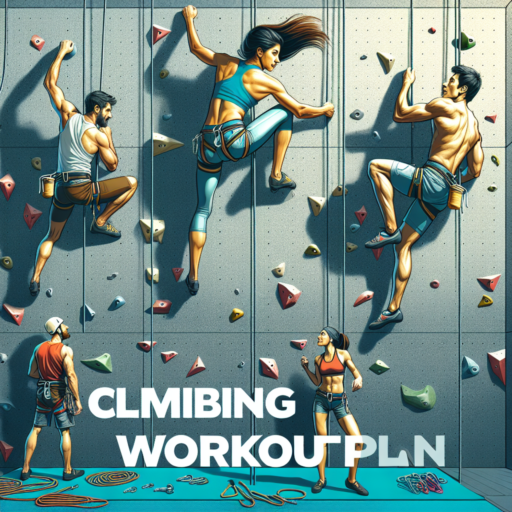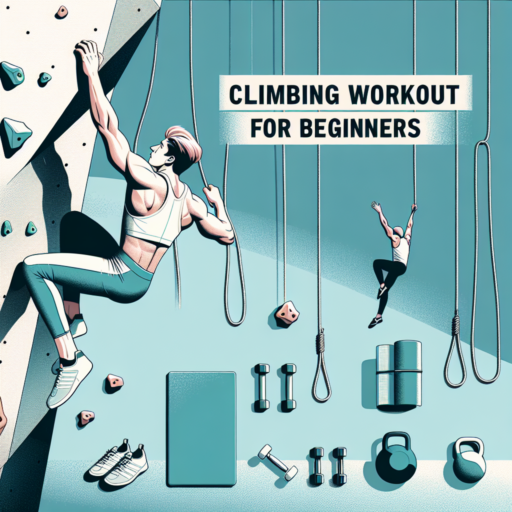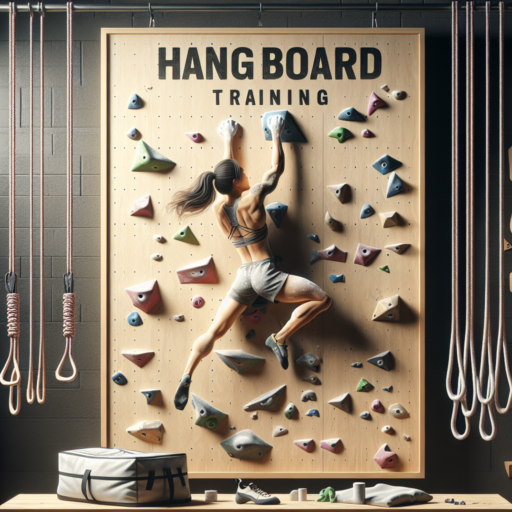The Ultimate Climbing Workout Plan: Build Your Strength and Technique
Embarking on the journey to enhance your climbing prowess requires a harmonious blend of strength, technique, and mental fortitude. The ultimate climbing workout plan focuses not only on building muscle but also on refining the intricate techniques that distinguish a novice from an expert climber. At the heart of this plan is the understanding that every ascent is a puzzle, and your body and mind are the tools you use to solve it.
Core Strengthening Exercises for Climbers
Central to any climber’s workout regime should be core strengthening exercises. A robust core underpins almost every movement in climbing, providing the stability and balance needed to negotiate challenging routes. Incorporating exercises such as planks, hanging leg raises, and oblique twists into your routine can markedly improve your core strength, directly translating to improved performance on the wall.
Technique-Enhancing Drills
While brute strength can sometimes brute-force a route, technique is what makes climbing an art. Focus on drills that simulate the wide variety of movements you’ll encounter while climbing. Practices such as silent feet, which encourage precision in foot placement, and grip-switching exercises to improve hand dexterity and endurance are invaluable. By dedicating time to technique, climbers can economize their movements, conserve energy, and tackle routes more efficiently.
Remember, the journey to becoming a better climber is continuous and evolving. Incorporating these focused strength and technique workouts into your regimen will set a strong foundation, but the key to mastery lies in consistent practice and pushing your boundaries. Tailor your workouts to address your weaknesses, and remember, every missed grip or unexpected fall is an opportunity to learn and grow.
5 Essential Exercises for Every Climber’s Workout Plan
Every climber knows that success on the wall or the rock is not just about technique; it’s also about strength, endurance, and flexibility. That’s why incorporating a structured workout plan focusing on these aspects can significantly improve your climbing abilities. Among the myriad of exercises out there, five stand out as essential for climbers aiming to push their limits. These exercises target core climbing muscles, enhance grip strength, and improve overall body control and balance.
Finger Hangs
Finger strength is paramount for climbers, and finger hangs are the perfect exercise to build it. Using a hangboard, you focus on the grip, specifically targeting the forearms and finger muscles crucial for holding onto those tiny holds. Start with short durations and gradually increase as your strength improves. Ensure to perform this exercise with proper form to avoid injury.
Deadlifts
To develop a strong back and solid core, deadlifts are essential. They target the lower back, glutes, and hamstrings, providing the power needed for dynamic moves on the wall. Proper form and gradual weight increase are vital to gain the maximum benefit from this exercise without risking injury. Incorporating deadlifts twice a week into your workout can vastly improve your lower body strength, crucial for those challenging overhanging routes.
Planks
A climber’s core is their powerhouse, and planks are one of the most effective exercises to build endurance and stability in this area. By engaging multiple muscle groups, including the shoulders, chest, and legs, planks help in achieving better balance and body control while climbing. Incorporating various plank variations into your routine will ensure a well-rounded core workout, supporting improved performance on the climb.
Creating Your Climbing Workout Schedule: A Step-by-Step Guide
Embarking on a climbing journey requires not just courage but also meticulous preparation, especially when it comes to crafting an effective workout schedule. Whether you’re aiming to conquer indoor walls or rugged outdoor climbs, a well-thought-out schedule is your roadmap to reaching new heights. Let’s dive into how to create a climbing workout plan that integrates strength, endurance, and climbing technique development.
Assess Your Climbing Goals and Current Fitness Level
Before jotting down a single workout, it’s crucial to evaluate where you stand in terms of your climbing ability and what you aim to achieve. Are you eyeing to improve your bouldering skills, or are you after the stamina needed for multi-pitch routes? Understanding your goals and your current fitness level will dictate the intensity and focus of your workouts. Remember to tailor your schedule to your personal progress and aspirations, ensuring a balance between challenge and achievable milestones.
Building a Balanced Workout Routine
Integrating a variety of exercises into your climbing workout schedule is key to developing a well-rounded physique capable of tackling any climb. A balance of cardiovascular training, strength exercises, and climbing-specific drills will best prepare your body for the demands of the sport. For instance, incorporating core-stabilizing exercises and grip strength work can dramatically improve your efficiency on the wall. Additionally, dedicating certain days to technique practice on the climbing wall allows you to apply and refine your skills in a controlled environment.
Remember, consistency is as crucial as the workout itself. Establishing regular training intervals—whether that’s alternating between workout types day by day or setting specific days for strength versus climbing practice—helps in gradually building endurance and skill. Listening to your body and adjusting your workout intensity and rest days accordingly is essential to prevent overtraining and injuries, setting the stage for steady progress in your climbing journey.
Top Equipment to Enhance Your Climbing Training at Home
Transforming your home into a climber’s oasis doesn’t have to be a lofty dream. With the right equipment, you can recreate the challenges and thrills of climbing in the comfort of your own space. Whether you’re prepping for a climb or simply looking to maintain your climbing fitness, several top-notch tools can help enhance your training regimen.
Fingerboards and Hangboards
One of the quintessential pieces of equipment for any climber is a fingerboard or hangboard. These devices are not only compact but incredibly effective at building finger strength and grip endurance. By incorporating a variety of holds and edges, climbers can simulate the grip challenges faced on real rock surfaces, making it an invaluable tool for improving climbing techniques.
Climbing Holds and Volumes
To mimic the complexity and variety of natural rock formations, adding climbing holds and volumes to a home setup can be game-changing. These can be arranged in limitless configurations on a climbing wall, allowing for a wide range of routes and difficulty levels. This versatility ensures climbers can continuously challenge themselves and progress in their training without stepping outside their doorstep.
While investing in climbing-specific equipment may seem daunting at first, the long-term benefits in strength, technique, and endurance are undeniable. By carefully selecting tools that cater to your training needs, your home can become the ultimate climbing training ground. Whether you’re a veteran climber or just starting, integrating these tools into your routine will bring measurable improvements in your climbing capabilities.
No se han encontrado productos.
Nutrition for Climbers: What to Eat for Optimal Performance
Understanding the unique nutritional needs of climbers is essential for optimizing performance, whether tackling a challenging boulder problem or embarking on a multi-pitch adventure. Climbing requires a fine balance of strength, endurance, and mental focus, with each aspect benefiting significantly from targeted dietary strategies. The right nutrition plan can help climbers push their limits, recover faster, and maintain energy levels throughout their climbs.
Carbohydrates are the primary energy source for climbers, fueling both short bursts of intense activity and longer, endurance-based efforts. Complex carbohydrates, such as whole grains, fruits, and vegetables, should be the cornerstone of a climber’s diet. These foods provide long-lasting energy, fiber, and essential nutrients to support overall health and performance. Additionally, incorporating a moderate amount of healthy fats such as nuts, seeds, and avocados can offer sustained energy and assist in vitamin absorption.
Protein intake is equally crucial for climbers. It supports muscle repair and growth, helping to mend the micro-tears that occur during rigorous climbing sessions. Lean protein sources like chicken, fish, tofu, and legumes not only promote muscle recovery but also contribute to a feeling of fullness, aiding in weight management. Aiming for a balance of carbohydrates, fats, and proteins in every meal can help climbers maintain optimal energy levels and muscle function.
How to Measure Progress in Your Climbing Workout Plan
Measuring progress in your climbing workout plan requires a structured approach to notice improvements over time. It’s not just about conquering harder routes or adding more climbs to your session. It involves a detailed understanding of both your physical and technical growth within the sport. Tracking your progress can significantly enhance your motivation and help you set realistic goals for future climbs.
Track Your Climbing Grades: One of the most straightforward metrics for measuring progress is by observing the difficulty of the routes you can successfully climb over time. Graduating from a 5.9 to a 5.10, for instance, represents a clear step forward in your climbing abilities. Using a climbing journal or app to note the grades you’re climbing can give you a tangible metric of your improvement.
Monitor Your Endurance and Strength: Endurance and strength are critical to climbing success. Tracking how many climbs you can do in a session or the increase in weight you can lift during training can provide insights into your physical development. Additionally, noting improvements in grip strength or the ability to hold tension in challenging positions are key indicators of progress.
Improvement in climbing isn’t only about climbing harder routes, but also about refining technique and efficiency. Observing how you manage your energy and use body positioning strategically can be a bit more subjective but equally critical. Consider periodically recording your climbing sessions to visually notice improvements in your technique over time.
Common Mistakes to Avoid in Your Climbing Training Routine
When it comes to enhancing your climbing skills, incorporating a well-rounded training program is essential. However, even the most enthusiastic climbers can fall into certain pitfalls that may hinder their progress or, worse, lead to injuries. Understanding and avoiding these common mistakes can make a significant difference in your climbing performance and enjoyment.
Overlooking Rest Days
One of the major mistakes climbers make is neglecting the importance of rest days in their training routine. It’s easy to think that more training means better performance, but overtraining can lead to fatigue, decreased performance, and injury. Your muscles need time to repair and grow stronger, making rest days as crucial as your most intense training sessions.
Ignoring Technique
Focusing too much on physical strength while ignoring climbing technique is another common error. Strong muscles are important, but without proper technique, you’re likely to hit a plateau in your performance. Technique drills and mindful climbing, where focus is placed on how you move, can lead to significant improvements and help prevent injuries related to poor form.
Failing to Plan
Lastly, failing to plan your climbing sessions can lead to inconsistent training and slow progress. Having a structured schedule that includes varied workouts, technique practice, and rest days ensures that you are covering all aspects necessary for improvement. This approach prevents stagnation and keeps your climbing sessions both challenging and exciting.
Incorporating Flexibility and Mobility Work into Your Climbing Plan
Integrating flexibility and mobility exercises into your climbing routine can significantly improve your performance on the wall. Climbers often focus on building strength and endurance, overlooking the potent benefits of being flexible and mobile. This approach enhances your ability to reach further, climb more efficiently, and reduce the risk of injuries. By developing a broad range of movement, you prepare your body not just for the next climb but for more challenging ascents ahead.
Starting with dynamic stretches before climbing primes your muscles and joints for the activity. It’s not just about reaching higher; it’s also about engaging your muscles more effectively. Techniques such as hip flexor stretches, shoulder mobility exercises, and dynamic leg stretches can significantly impact your performance. Incorporating these exercises into your warm-up routine ensures your body is agile and ready for the demands of climbing.
Similarly, focusing on mobility work during your off-days supports recovery and flexibility. Exercises like yoga and pilates can be especially beneficial for climbers. They focus on core strength, flexibility, and controlled movements, complementing the rigorous demands of climbing. These practices not only aid in muscle recovery but also improve range of motion and body awareness, crucial components for tackling complex climbs.
Advanced Techniques and Workouts for Experienced Climbers
For those who have surpassed the basics of climbing and are looking to elevate their skills further, mastering advanced techniques and incorporating specialized workouts into their routine is crucial. Experienced climbers understand that to conquer more challenging climbs, they need to push their limits and refine their strategy on the wall.
Optimizing Grip Strength and Endurance
Focusing on grip strength is essential for those looking to progress in their climbing capabilities. Advanced climbers should consider exercises such as dead hangs and wrist curls to enhance their grip endurance. Incorporating a regimen of fingerboard training can also be highly beneficial, targeting the specific muscles used during climbing. Such workouts not only improve grip strength but also significantly increase finger strength, allowing climbers to hold onto smaller holds for longer periods.
Dynamic Movements and Body Positioning
Mastering dynamic movements and understanding optimal body positioning are paramount for advanced climbers. Techniques like drop knees, flagging, and dynos can greatly reduce the energy expended during a climb. By focusing on these skills, climbers can achieve more efficient movement on the wall, allowing them to tackle more technically demanding routes with ease. It is crucial to practice these techniques in controlled environments, gradually incorporating them into more complex climbs to see the best results.
Customized Training Plans
Developing a personalized training plan is key for advanced climbers aiming to reach higher grades. This plan should include a mix of endurance exercises, strength training, and technical drills tailored to the climber’s individual weaknesses and climbing goals. Regularly assessing progress and adjusting the plan accordingly will ensure continuous improvement and help climbers overcome plateaus in their performance. By dedicating time to both physical and mental training, climbers can prepare themselves for the challenges that advanced routes present.
Staying Motivated: Tips for Keeping Your Climbing Workout Plan Exciting
Vary Your Climbing Routes
One of the best ways to keep your climbing workout plan exciting is by varying the routes you take. Whether you’re at a climbing gym or out in nature, challenge yourself with different levels of difficulty and styles. This variety not only prevents boredom but also ensures that you’re engaging different muscle groups, enhancing overall strength and agility. Incorporate both bouldering and rope climbing into your routine to spice things up.
Set Personal Goals
Setting and achieving personal goals is incredibly motivating. Start by establishing short-term targets, like mastering a particular move or route, and then progress to long-term objectives such as increasing your endurance to climb higher grades. Celebrating these milestones can give you a tremendous psychological boost and keep you focused on your climbing journey. Leveraging apps or journals to track your progress can make this process even more rewarding.
Join a Climbing Community
Nothing keeps motivation high like the support and camaraderie of a climbing community. Joining a group or club can introduce you to climbers who share your passion and skills level. Participating in climbing meet-ups, competitions, or workshops not only provides social interaction but also exposes you to new climbing techniques and strategies. Learning from others and sharing your own experiences can significantly contribute to keeping your workout plan intriguing and dynamic.




